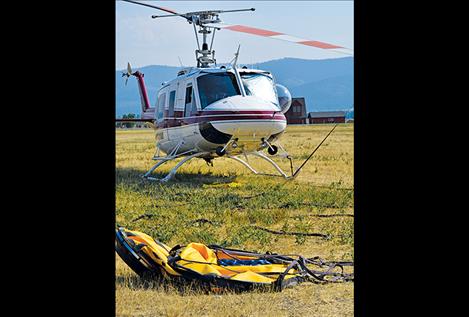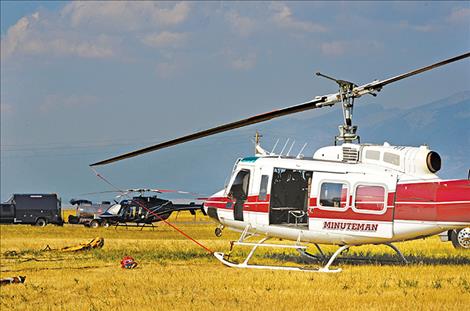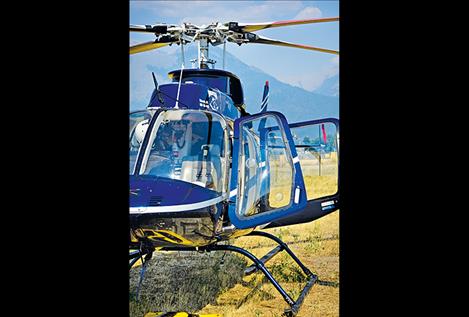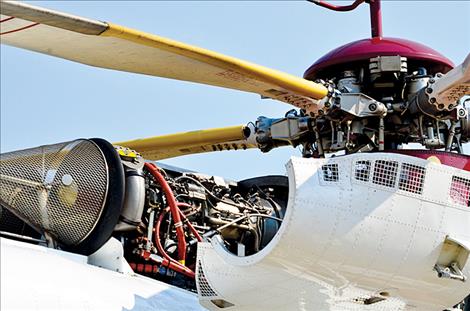St. Ignatius airport becomes hot spot for fire traffic
Hey savvy news reader! Thanks for choosing local.
You are now reading
1 of 3 free articles.
ST. IGNATIUS – The St. Ignatius Airport has become the home base for helicopter-delivered resources for two major fires.
“We haven’t seen anything like it before,” said Mike Kuefler, airport volunteer and former director. He said smaller fire crews have been at the airport in the past but nothing on the scale that set up camp in early August. He added that the airport provides a place for emergency crews of all kinds, and he is happy the fire crews are able to utilize the airport.
The newly created St. Ignatius helibase provides aircraft support on the Liberty fire and the Rice Ridge fire. Helibase Manager Josh Klare looked at the current fire location map for the Liberty fire on Sunday and noted that 80 percent of it is within the primitive area of the Flathead Indian Reservation and it’s edging into state ground and Forest Service areas. The Rice Ridge fire is near Seeley Lake.
The helibase was developed at the St. Ignatius Airport for its proximity to both fires, and although St. Ignatius has its share of smoke it isn’t as thick as it is in Seeley.
“It’s tough to support aircraft out of Seeley right now; visibility over the mountains is minimal,” Klare said. “They’ve been socked in with smoke.”
About half a dozen large and small aircraft are waiting ready next to jet fuel tankers at the airport for both water suppression and personnel transport.
The double-bladed Chinook helicopter with an internal water tank from Billings was out on a mission on Sunday afternoon. The S-61 is the smaller of the two water tankers parked at the airport with a length of 72 feet from tip to tail, and it can hold about 1,000 gallons of water depending on altitude. Both water tankers take in water from a straw like a snorkel.
The smaller aircraft parked at the airport transport water with a bucket. One of the pilots said filling a 350-gallon flexible plastic bucket with water that is attached from the helicopter to the end of a 150-foot line was like threading a needle in the air.
It was said by one Missoula Helitack firefighter that the Forest Service is utilizing water tankers more often this year than in the past, but buckets are still useful and easier to fill up with water from locations near the fire. The smaller aircraft can maneuver into tighter spots where vegetation is thick to fill up the buckets. Tankers need more space.
Along with the two water tankers, several smaller helicopters were parked at the airport including an Astar, a Bell 407 and a Bell 210. An air operations center located in what looked like a red trailer is at the center of the base providing radio information to air support operations, personnel at the fire, and crews at Incident Command Posts. One of those ICPs is located in Arlee.
The St. Ignatius Airport is open to the public and 100 percent functional, Klare said. “We ask people to monitor the airport radio channel so we don’t have any collisions, which is something pilots normally do.” He also said people without an authorized uniform are not allowed on deck when any of the aircraft land or take off as a safety precaution. At this time, he doesn’t have any predictions for how long the helibase will be stationed in St. Ignatius.



















